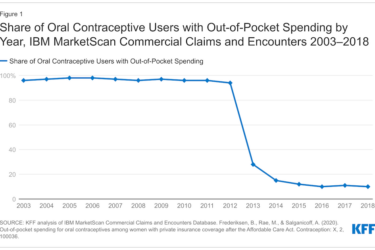
Now that Senate Republicans have delayed action on their Obamacare “repeal and replace” bill until after the Independence Day recess, let’s take a moment to talk about innovation.
One underlying objective of the Affordable Care Act was to spur adoption of value-based care and technology-driven care coordination – in tandem with providing free preventive care. The idea was that, over time, paying providers for outcomes instead of volume would reduce total costs. Preventive screenings and tests would lower health spending by catching diseases earlier. More primary care, hopefully, would reduce costly emergency department care and long inpatient stays. In the seven years since the ACA was enacted, payers and providers have moved down this path.
Looking specifically at the Medicaid population, 32 states expanded Medicaid under the ACA, giving safety-net hospitals and clinics in those states access to a larger pool of insured patients. Safety-net hospitals have moved to adopt technology-driven tools, such as disease registries, population health management dashboards and clinical decision support, to better track patients and offer tailored interventions.
Results of these efforts are now coming into focus, with a recent study on Oregon’s Medicaid delivery-system reforms documenting cost reductions.
Also, 16 states – including California, New York and Texas – received non-ACA-related Medicaid Section 1115 Demonstration Waivers from the Centers for Medicare and Medicaid Services to conduct their delivery-system reforms. In California, the Medi-Cal 2020 program works to move safety-net hospitals away from acute-based care and toward primary, preventative care. Among projects underway in the state are integrating behavioral health care with primary care and reducing the number of patients with uncontrolled diabetes and hypertension. That means hospitals are implementing delivery-system improvements while they also are experiencing an explosion in insured patients through the Medicaid expansion. (One in three Californians are now covered by Medicaid.)
In a letter of opposition to the Senate’s repeal bill, the National Association of Medicaid Directors wrote that Medicaid “has a record of innovation and improvement outcomes for the nation’s most vulnerable citizens.”
What impact would the House and Senate repeal bills have on innovation at safety-net hospitals? Rather than going down the path of greater care coordination and preventative services, hospitals that primarily serve Medicaid patients would “buckle under the bill’s $772 billion in Medicaid cuts,” warned America’s Essential Hospitals, a national trade group representing safety-net hospitals.
Reporters looking for angles on the repeal story might want to contact their local safety-net hospitals – public and district hospitals, critical access hospitals and academic medical centers – and find out what population health strategies they have implemented and how those could be affected by the Senate or House repeal bills.
If fewer people have Medicaid coverage, this would mean the hospitals that serve them would lose the ability to track the patients over time to enable interventions that would keep chronic diseases under control. With AEH and others predicting workforce cuts at safety-net hospitals, it also could mean fewer clinicians, IT specialists and other staff available to conduct improvement work.
A final thought: the word “innovation” doesn’t appear in the bill text for either the House or the Senate repeal legislation, compared to 32 times in the ACA text. The word “technology” appears once in the Senate repeal bill, and zero times in the House repeal bill. “Technology” is referenced 79 times in the ACA.
Resources:
- America’s Essential Hospitals.
- National Association of State Medicaid Directors.
- Medicaid Section 1115 Demonstration Waivers overview by the Kaiser Family Foundation.
- Delivery System Innovation: An overview in Health Affairs.








